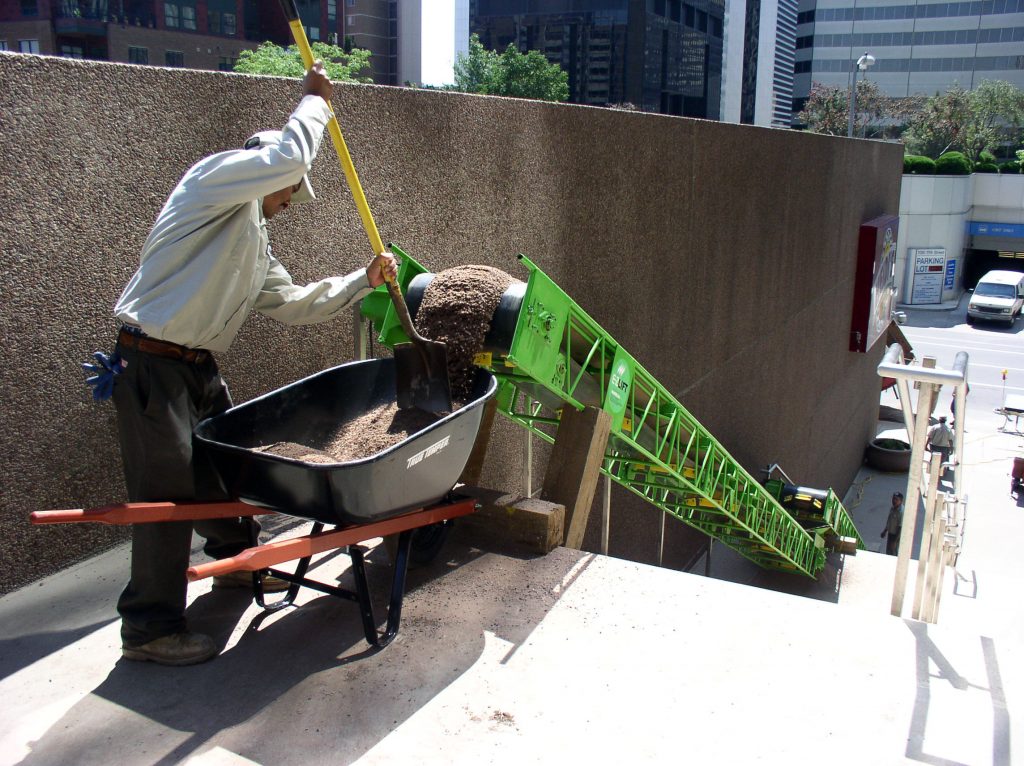Dirt Conveyor Systems: The Smarter Way to Move Dirt
Moving dirt, sand, or gravel with a wheelbarrow is exhausting, slow, and inefficient. Why spend hours hauling heavy loads when you can streamline the process with a dirt conveyor system? Whether you’re working on an excavation, landscaping project, or construction site, a conveyor can make the job easier, faster, and safer.
If you’re tackling a short-term project and don’t need to buy one outright, finding a dirt conveyor rental near me is a cost-effective way to get the right equipment without a big investment. These conveyors can fit into tight spaces, move materials up inclines, and eliminate the need for backbreaking manual labor.
How Does a Dirt Conveyor System Work?
A dirt conveyor system operates using a belt looped around pulleys that continuously rotates to transport materials from one place to another. The drive pulley moves the belt forward, while an idler pulley helps maintain tension. Some conveyor setups even include curved sections to accommodate job sites with elevation changes or tight turns.
For heavier loads, rollers help prevent the belt from sagging, ensuring smooth and efficient transport. Whether you’re moving dirt for a backyard project or hauling tons of material on a large construction site, conveyors can handle it all.
Choosing the Right Dirt Conveyor System
Not all conveyors are the same, so selecting the right one depends on a few key factors:
✔ Distance – How far does your dirt or gravel need to go? Longer distances may require multiple conveyors connected in a cascading setup.
✔ Incline – Does your project require moving materials up steep inclines, such as basement excavations or hillside landscaping? Steep conveyors with bucket-style belts help prevent material rollback.
✔ Throughput – How much material do you need to move per hour? Some conveyors can transport 25 to 50 tons of dirt per hour, depending on the belt width.
✔ Portability – If you’re working in a tight space, like between buildings or inside a basement, a compact and lightweight conveyor may be the best option.
For short-term or occasional projects, renting may be the most practical choice. If you’re searching for a dirt conveyor rental near me, consider a company that offers high-quality equipment, flexible rental terms, and expert support.

Essential Parts of a Dirt Conveyor System
Every dirt conveyor system relies on a few critical components to keep it running smoothly:
- Belt Support – Provides a stable surface to prevent sagging and ensure efficient movement.
- Rollers – Help distribute the weight of heavier loads, preventing stress on the belt.
- Pulleys – Work together to keep the belt moving in the right direction. The drive pulley powers the belt, while the idler pulley helps maintain proper tension.
- Drive Pulley – The main power source that controls belt movement, whether motorized or manually operated.
Having a well-maintained conveyor with strong belt support and sturdy rollers ensures smooth operation, reducing downtime and increasing efficiency.
Lightweight vs. Heavyweight Conveyors
Depending on your project, you’ll need either a lightweight or heavyweight dirt conveyor system:
Lightweight Conveyors – Best for handling smaller loads, often used in food processing, pharmaceutical production, and paper goods industries. These conveyors have a working tension of under 160 pounds per inch of width.
Heavyweight Conveyors – Designed for tougher jobs, including dirt, gravel, and construction debris. With a working tension of over 160 pounds per inch of width, these conveyors are used in mining, excavation, and high-temperature applications.
For most construction and landscaping projects, a heavyweight dirt conveyor system is the way to go.
The Benefits of Using a Dirt Conveyor System
Why struggle with a wheelbarrow when a dirt conveyor system can do the heavy lifting for you? Here’s why you should consider one for your next project:
- Saves Time & Labor – Move materials up to 5x faster than manual labor.
- Handles Steep Inclines – Ideal for basement excavation, trench digging, and hard-to-reach areas.
- Reduces Workplace Injury – Less heavy lifting means less strain on workers.
- Prevents Material Rollback – Bucket-style conveyor belts ensure dirt and gravel move efficiently up steep angles.
- Covers Long Distances – Multiple conveyors can be connected for larger-scale projects.
- Fits into Tight Spaces – Many models are compact and designed to navigate small areas.
Whether you need a dirt conveyor rental near me for a weekend project or a permanent conveyor for a long-term job, investing in the right equipment will make your work easier and more efficient.
Get the Best Dirt Conveyor for Your Project
At E-Z Lift Conveyors, we offer high-quality dirt conveyor systems built to handle the toughest jobs. If you need a dirt conveyor rental near me, our team can help you find the perfect solution for your project.
Don’t waste time and energy with manual labor—get the right equipment and move dirt the smart way. Contact us today to learn more!
